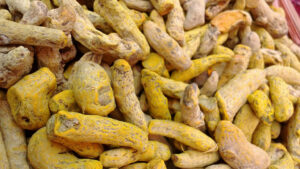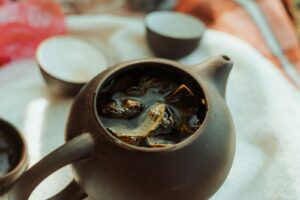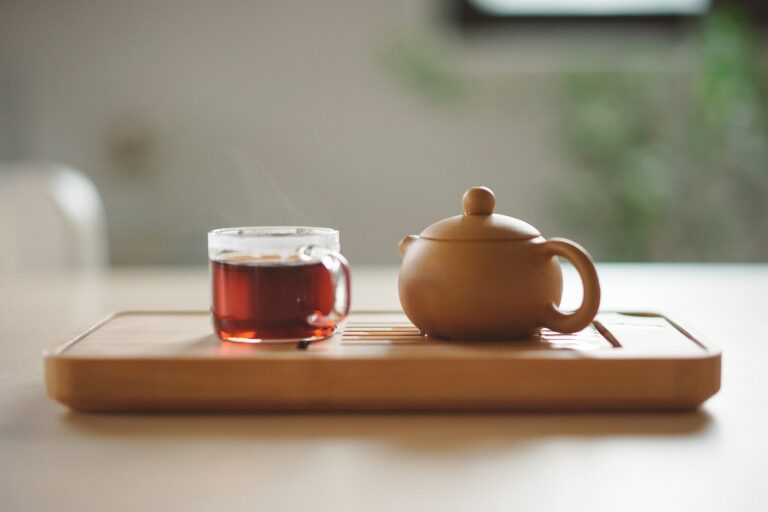Curious about how do you make turmeric tea? Well, your search ends here! This radiant and health-boosting drink is a favorite among herbal tea lovers and health aficionados. In this guide, we’ll explore the essence of the turmeric tea recipe, its health advantages, recipe variations, and top tips.
Turmeric: The Golden Spice

Turmeric, known for its characteristic turban shape, bears a close resemblance to its cousin, ginger. Originating from South Asia, this ancient root spice has been celebrated for centuries, adding a bright, earthy flavor to countless dishes.
Moreover, turmeric isn’t just a culinary marvel. It’s also widely revered for its impressive health benefits. At the heart of these benefits lies a potent compound called curcumin.
Curcumin is coveted in the health and wellness world for its potent antioxidant and anti-inflammatory properties. These beneficial properties make turmeric a popular choice for those looking to boost their overall health.
Though fresh turmeric root is an excellent choice, you can also enjoy the benefits of turmeric in the form of ground turmeric. This easy-to-use format is simple to incorporate into a wide variety of recipes, including the invigorating turmeric tea that we’ll explore further.
Gather Your Ingredients
Before we set off on our journey to make turmeric tea, let’s gather our ingredients. You can either use fresh turmeric root or ground turmeric. The other components include fresh ginger root, making your tea a little spicy, lemon juice for its tang, and freshly ground black pepper.
Why add black pepper to your turmeric tea recipe? Black pepper contains a compound called piperine that helps our body absorb the curcumin in turmeric more effectively.
If you like your tea creamy and delicious, invest in a good old coconut oil. Now let’s get into the actual steps on how to make turmeric tea.
The Golden Elixir: A Turmeric Tea Recipe

1. In a pot, add the following: a 1-inch piece each of fresh turmeric root and fresh ginger root, both finely-grated, 1 teaspoon of turmeric powder, and 4 cups of boiling hot water. If you’re using dried turmeric, reduce the quantity to half a teaspoon. Stir well.
2. Let this mixture gently simmer for approximately 10 minutes before straining.
3. After straining, stir in the juice of half a lemon, a pinch of ground black pepper, and 1 teaspoon of coconut oil. Sweeten with a dollop of raw honey or maple syrup.
Enjoy your fresh turmeric tea as a warm drink.
Variations of Turmeric Tea Recipes
Experiment with these recipe variations depending on your mood and preferences.
1. Golden Milk: Add a spoonful of turmeric paste to hot milk with a pinch each of ground cinnamon and black pepper. Sweeten with raw honey. Love golden milk? This comforting golden tea is for you.
2. Turmeric Latte/Golden Latte: Blend equal parts of coconut milk and cow’s milk with 1 teaspoon of powdered turmeric, optional spices like cinnamon stick, ground ginger, and clove. Sweeten with maple syrup to enjoy this rejuvenating hot drink.
3. Green Tea and Turmeric Fusion: To your usual green tea, add a pinch of ground turmeric powder and fresh root ginger. Brew as per your usual green tea instructions.
Expert Tips and Recommendations
1. For optimal health benefits, consider consuming turmeric regularly. Moderation is the key as excessive turmeric intake can lead to irritation, especially for people with irritable bowel syndrome.
2. Maximizing turmeric’s health benefits involves pairing it with black pepper, as mentioned earlier. However, you can also use fats like olive oil or avocado oil for the same purpose.
3. The best time to drink turmeric tea is before bed. This healing drink may help reduce inflammation and promote sleep.
Turmeric in Culinary Traditions

Turmeric is a mainstay in South Asian cuisines, particularly in Indian cooking, where it is used in crafting spice blends for curries and dals. Plus, the natural golden hue of turmeric makes it a great natural food coloring, adding vibrancy to dishes.
In addition to its wide use in savory dishes, turmeric has found its way into beverages. Turmeric lattes or ‘golden milk’ emerged as a trend in the international café scene in recent years, signaling an embrace of this spice well beyond its traditional cultural roots.
Turmeric: Beyond the Culinary Realm
Despite its reputation as a beloved culinary spice, the uses of turmeric extend much further. This versatile root holds a special place in many medicinal practices, demonstrating its value beyond the kitchen.
A notable example is its long-standing history in traditional Ayurveda and Chinese medicine. In these practices, turmeric isn’t just another ingredient but a potent healing agent. It’s not uncommon to see turmeric used in remedies for several health conditions, underscoring its enduring medicinal relevance.
In addition to these traditional remedies, turmeric is now featuring prominently in the world of natural beauty. Due to its abundant anti-inflammatory and antioxidant properties, it’s a popular choice in homemade face masks and skincare treatments.
From improving skin’s glow to reducing signs of inflammation, this brilliant spice is an all-rounder. Its widespread use in beauty routines around the globe highlights another dimension of this versatile spice, showcasing that its benefits are not just internal, but also external.
How Do You Make Turmeric Tea? – Final Thoughts
Knowing how to make turmeric tea sets you on the path to harness this golden spice’s health benefits. Whether it’s a cup of turmeric tea as part of your morning routine or enjoying a warm, cozy turmeric latte on a rainy day, there’s a turmeric concoction for everyone. Why not try making your own turmeric tea today? You might just fall in love with its golden, healing goodness.
Go on, add fresh ginger and spices from your pantry to this basic turmeric tea recipe, and make it your own. Don’t forget to share your turmeric tea experiences and recipes with us. Happy brewing!

